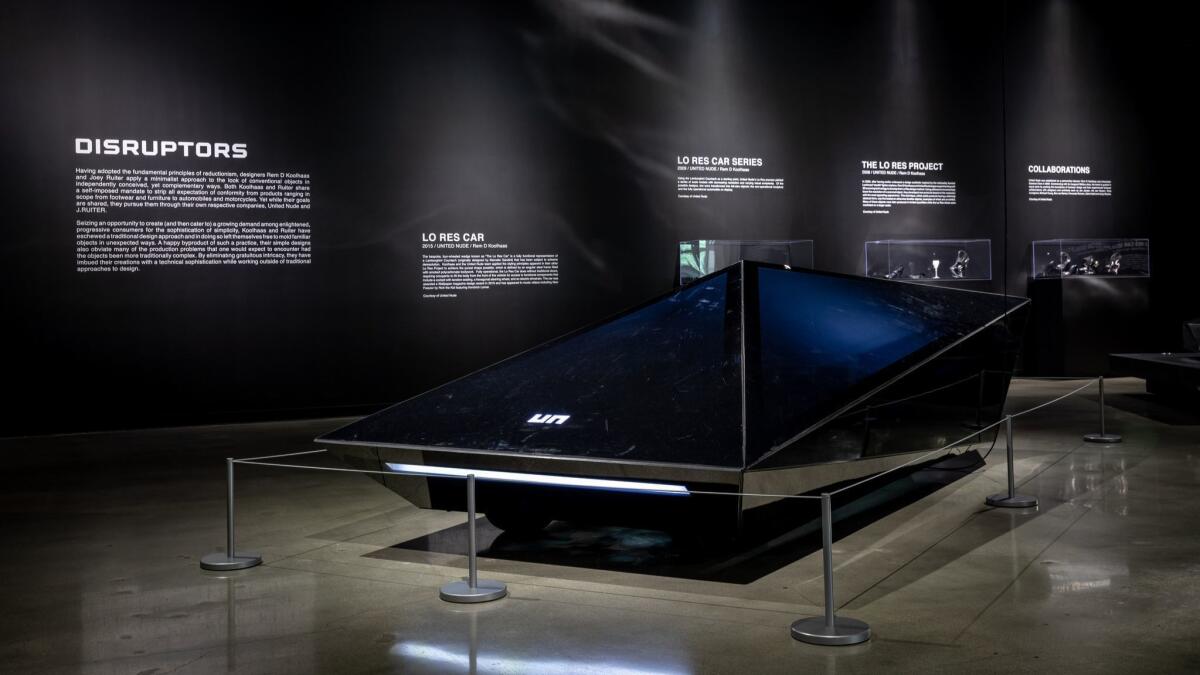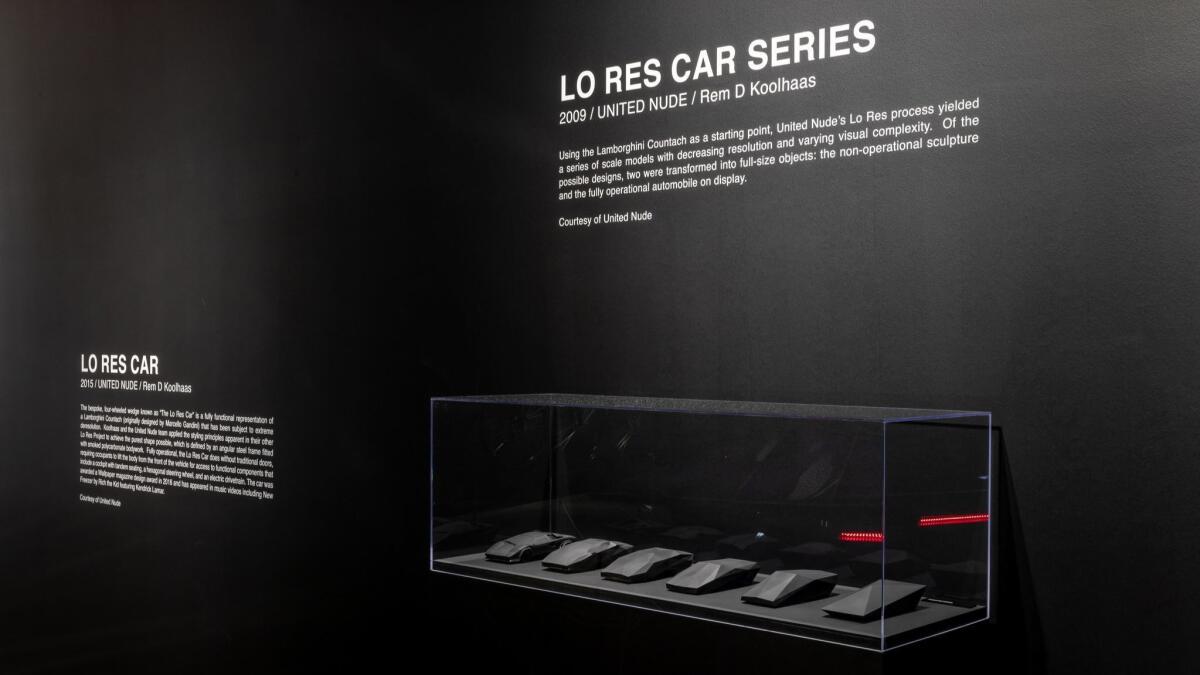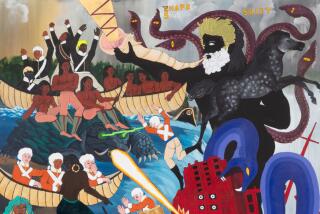The Petersen’s ‘Disruptors’ exhibition rethinks the car — from the wheels up

What if all the elements we associate with a vehicle — beyond the defining characteristic of being able to transport us from place to place — were stripped away, blunted or obscured altogether? That’s the question asked — and impressively answered — in the Petersen Automotive Museum’s new exhibition “Disruptors,” which features the work of furniture designer Joey Ruiter and shoe designer Rem D. Koolhaas, the nephew and namesake of Dutch architect Rem Koolhaas.
Located in the museum’s Armand Hammer Foundation Gallery, the exhibition is nearly as sleek and minimalist as the handful of vehicles on display and includes a few nonvehicular pieces from each designer to contextualize their work. The focus-puller of the whole affair is L.A.-based Koolhaas’ Low Res Car (2015), which gleams like a hovering shard of obsidian in the center of the space next to a mirrored sculpture of the same size. Both were created using a process first employed in 2008 to create shoes for his United Nude label (an example is displayed nearby): making a 3-D scan of a model-size Lamborghini Countach and then manually manipulating the image, dialing down the resolution over and over until the famed auto’s defining curves and lines all but disappear.

Ruiter, a Michigan-based industrial designer whose creations include office furniture (for Herman Miller) as well as watercraft and bicycles, has filled the rest of the gallery with equally fantastical modes of transportation, including a skateboard that resembles a razor blade on wheels, a bicycle with comically huge tires, and a single-track snowmobile that looks like a studded leather steamer trunk crossed with a Zamboni. But it’s the two Ruiter-designed cars on exhibit that are the most thought-provoking meta-meditations on motorized transportation.
One of them, dubbed the Reboot Buggy, resembles a stretch version of the classic big-tired dune buggy. It began, Ruiter said during a pre-opening tour of the exhibition, with a bit of philosophical reflection on both halves of the horse-and-buggy equation.
“A lot of the inspiration for this is the early turn-of-the-century Amish horse and buggy,” he explained. “If the horse leaves, what are you left with? Just a buggy. … And the horse wasn’t designed for us to ride — it just wants to eat grass – but we turned it into transportation. So I asked ‘What does the automobile want to be for itself? What would it be if it didn’t have us to deal with?’ It would want to be lightweight, it would want to be able to go anywhere and it would want to be efficient. So the engine is in the middle for weight distribution and everything hangs from the frame, which is on top of the car.”
The other is Ruiter’s response to the rolling living room that the modern automobile has become, cloistering drivers from the rest of the world. “The name — the Consumer Car — comes from the fact that you’re consuming all of the input — the noise, the smell, the scenery, the vibrations,” he said.
To achieve that sensory input, Ruiter designed the car to be low to the ground, obscured the tires, went without a windshield or power steering (or even doors) and gave the vehicle a boxy, toaster-like silhouette with exterior details inspired by handmade luggage. “That makes it feel like an accessory, a briefcase,” Ruiter explained. “And [when you drive it], you’re shifting through all the gears manually. It’s the ultimate [feeling] of [experiencing] all sensations at once. You can’t be texting in this.” (Which is something to keep in mind since the Consumer Car — like all the vehicles in the exhibition — is fully functional.)
What do the designers hope museum-goers will take away from the exhibition? The answer is as stripped-back and minimalist as the cars.
“We’re just trying to open people’s minds, to be honest,” Rem D. Koolhaas said.
“Disruptors” at the Petersen Automotive Museum, 6060 Wilshire Blvd., Los Angeles, daily from 10 a.m. to 6 p.m. through March 15, 2020. Museum admission is $16 for adults, $11 for children 4 to 17, and $14 for seniors.
For more musings on all things fashion and style, follow me at @ARTschorn
More to Read
Sign up for The Wild
We’ll help you find the best places to hike, bike and run, as well as the perfect silent spots for meditation and yoga.
You may occasionally receive promotional content from the Los Angeles Times.











